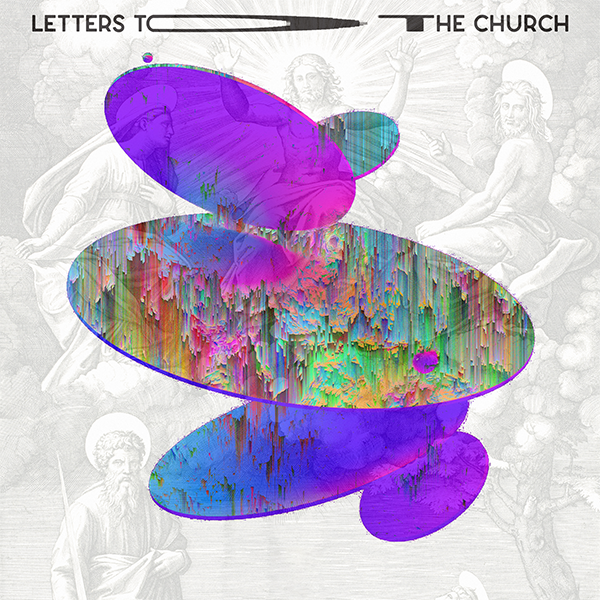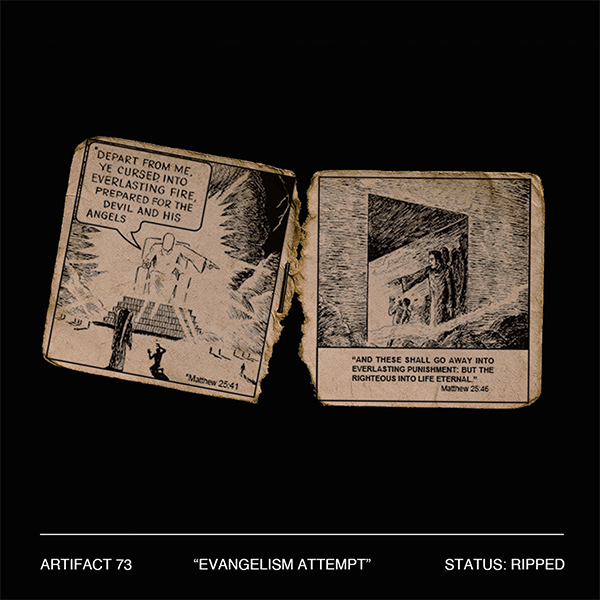Surprised by God at Tables: On The Eucharist as Mission (Pt. 1)
Editorial Note: Missio Alliance recognizes that significant numbers of Protestant believers experience Communion as largely symbolic in nature. The Eucharist is a mystery that Jesus himself invites us to ponder with him in fellowship. We invite you to do the same as you read Gino’s powerful meditation. ~CK
In the Eucharist, the real presence of Jesus is made known, and through eucharistic-shaped mission, Christians extend awareness of Jesus’s presence in the world. How does tending to the presence of Christ around the table fuel and propel the mission of the Church at other tables? This is the idea that we will explore in this article.
SEEING THE EUCHARIST THROUGH NEW EYES: CARAVAGGIO’S
What is meant by the Eucharist and the “real presence of Christ?” Well, other than experiencing this powerful practice firsthand, the best description I can offer is found in art. Specifically, Caravaggio’s painting, “Supper at Emmaus,”1 also embedded within this article. In it, Caravaggio illustrates the appearance of Jesus to the disciples as described in the Gospel of Luke. The disciples’ recognition of Jesus occurs between the words “Then their eyes were opened, and they recognized him;” and “he vanished from their sight” (Luke 24:31). In that instant, the disciples were surprised by their recognition of the very real presence of Jesus found in the breaking of bread. Caravaggio seems to capture the brief moment in between unawareness and awareness – the moment of recognizing Jesus’s presence at the table.
In the Eucharist, the real presence of Jesus is made known, and through eucharistic-shaped mission, Christians extend awareness of Jesus’s presence in the world. Share on XWhile Caravaggio intentionally uses light and shadows in his painting to focus the observer’s gaze onto Jesus in the center of the painting, I always find my eyes fixed on the disciples’ bodies. The man in the left of the picture, with his elbows bent, hands grasping the chair’s armrests as if to push himself away from the table. You can almost hear him saying in approving disbelief, “Get out of here! It’s really you!” Not to be out-surprised, the man in the right of the picture has his arms outstretched, his right hand blurred in a fluttering motion of one saying, “No, no, no! I can’t believe it! It’s you, Lord!”
The surprise and wonder of Caravaggio’s disciples’ are responses worthy of those discerning Jesus’s presence in the Eucharist. Our awe and wonder in finding Jesus present in the Eucharist may rightly lead to a reaction of surprise. In the blessing, breaking, and giving of bread, that which was always there (Jesus’s presence) is made known. Those who have eyes to see Jesus in the meal – for the first time or anew – are truly surprised by God. It is this surprise, this joy and disbelief, in discerning Jesus in the Eucharist that is extended into the spaces of relationship and mission around us. As I would describe it, eucharistic mission extends the opportunity to be surprised by Jesus into the world around us.

“Supper at Emmaus” by Caravaggio, 1601
The Eucharist inaugurated by Jesus (Luke 22:14-23, among other gospel accounts) tells us that Jesus desires to have us near him. According to Rowan Williams, to share the Eucharist “means to live as people who know that they are always guests – that they have been welcomed and that they are wanted.”2 The welcome that Jesus gifts us is found in the simple meal which Jesus first gave us: Eucharist.
Augustine described the presence of Jesus in the Eucharist as a “visible word” of God: “The word is added to the element, and there results the Sacrament, as if itself [is] also a kind of visible word.”3 God is made visible in Jesus, and Jesus’s real presence is visible in the bread and the cup. We organize and discern our lives around this meal. In this discernment, through Jesus’s presence, we may find ourselves (like the disciples in Caravaggio’s painting) continually surprised by God.4
Through Jesus’s presence in the Eucharist, we experience our welcome and wantedness. We partake of tangible elements, bread and wine, as we are joined in communion with God and one another. The Eucharist is more than a symbolic remembrance5 but rather a generative joining of people into the life and mission of God.
In the blessing, breaking, and giving of bread, that which was always there (Jesus’s presence) is made known. Those who have eyes to see Jesus in the meal – for the first time or anew – are truly surprised by God. Share on XA SHARED COMMUNITY AROUND A COMMON TABLE
When we began as a church plant around a table in our home, we did not begin with a public Sunday worship gathering. We began with prayer and conversation around a shared meal in our home. We would end the meal sharing bread and wine, alongside a time of discerning how Jesus was present among us, and what that might mean for us collectively. Around the table, tending to God’s presence, we saw the reconciliation of relationships, forming of new relationships, healing of trauma, confessions of faith, and deepening of joy in Jesus for many people. As we gathered each week, we would also discuss how we might extend this practice of tending to God’s presence into other places and among different relationships. “How might God be present and at work in other these spaces?” was our common question, followed closely by “And what do we think Jesus is calling us to do about it?”
As we experienced the surprise of God in our shared meals together, we were also being transformed into a community that cared for one another and those around us. As we asked, “What do we think Jesus is calling us to do in response to what we are seeing?,” the answers we discerned usually involved our being present with people outside our Eucharist table community. The simplicity of being with people right where they are was surprising for some. And yet it felt natural to extend the simple welcome Jesus had offered us to those directly in our lives. Over time, the tables in our city became spaces where shared dinners and morning coffee became eucharistic extensions of the practice of tending to God’s presence with people in our neighborhoods.
What we essentially discovered is that the Eucharist does not only move us into mission by how we practice it in closed community. Rather, as we extend the practice of the Eucharist into the spaces and relationships throughout our neighborhood, mission is shaped by the Eucharist. Said another way, the practice of Communion shapes our mission eucharistically.
EUCHARISTIC MISSION BEGINS WITH HUMILITY
In the Eucharist, we come as recipients of God’s grace through the presence of Jesus. We tend to Jesus’s presence with humility, discerning what we are called into doing with him. It is precisely this posture of humble recipients at the Lord’s Table that forms us eucharistically for mission at all tables. Eucharistically shaped mission means we are sent as humble learners, reliant on God’s work in and among us (See Luke 10). Eucharistically shaped mission is a movement away from the drive for power within Christendom, frequently marked by dominance, coercion, and imperialistic assumptions. Eucharistic mission begins as a recipient and fellow learner, participating in God’s work in the world. Through our regular practice of the Eucharist in community, we are formed into the kind of people who extend the Eucharist into other spaces of relationship, embodying the mission of God incarnationally in our world.
In Part 2 of this article, entitled “Surprised by God: Extending The Eucharist into the Neighborhood (Pt. 2)”, we’ll explore what Eucharistic mission looks like on a practical, normative level.
Eucharistically shaped mission means we are sent as humble learners, reliant on God’s work in and among us. (1/3) Share on X Eucharistically shaped mission is a movement away from the drive for power within Christendom, frequently marked by dominance, coercion, and imperialistic assumptions. (2/3) Share on X Eucharistic mission begins as a recipient and fellow learner, participating in God’s work in the world. (3/3) Share on X///
Gino Curcuruto is a bivocational planter/pastor of The Table Philadelphia. He and his wife, Jill, have started communities of people who tend to God’s presence in ordinary life. Additionally, he has equipped and coached leaders and lay people across the country to do the same. They have four amazing kids (Ella, Selah, Tim, and Nate) and two super-OK dogs (Mr. Tumnus and Lucy).
Footnotes
1 Caravaggio, “The Emmaus Supper,” viewed November 8, 2021 via https://www.nationalgallery.org.uk/paintings/michelangelo-merisi-da-caravaggio-the-supper-at-emmaus.
2 Rowan Williams, Being Christian, (Eerdmans: Grand Rapids, MI, 2014), 41.
3 Augustine wrote, “The word is added to the element, and there results the Sacrament, as if itself also a kind of visible word.” Augustine, “Trancates on John,” viewed November 15, 2021 at https://www.newadvent.org/fathers/1701080.htm, 80, 3.
4 I say “continually surprised” as I am drawn back to Caravaggio’s painting repeatedly.
5 Editorial Note: Missio Alliance recognizes and affirms that significant numbers of Protestant believers experience Communion as largely symbolic in nature. The Eucharist is a mystery that Jesus himself invites us to ponder with him in fellowship. We invite you to do the same as you read Gino’s powerful meditation. ~CK



